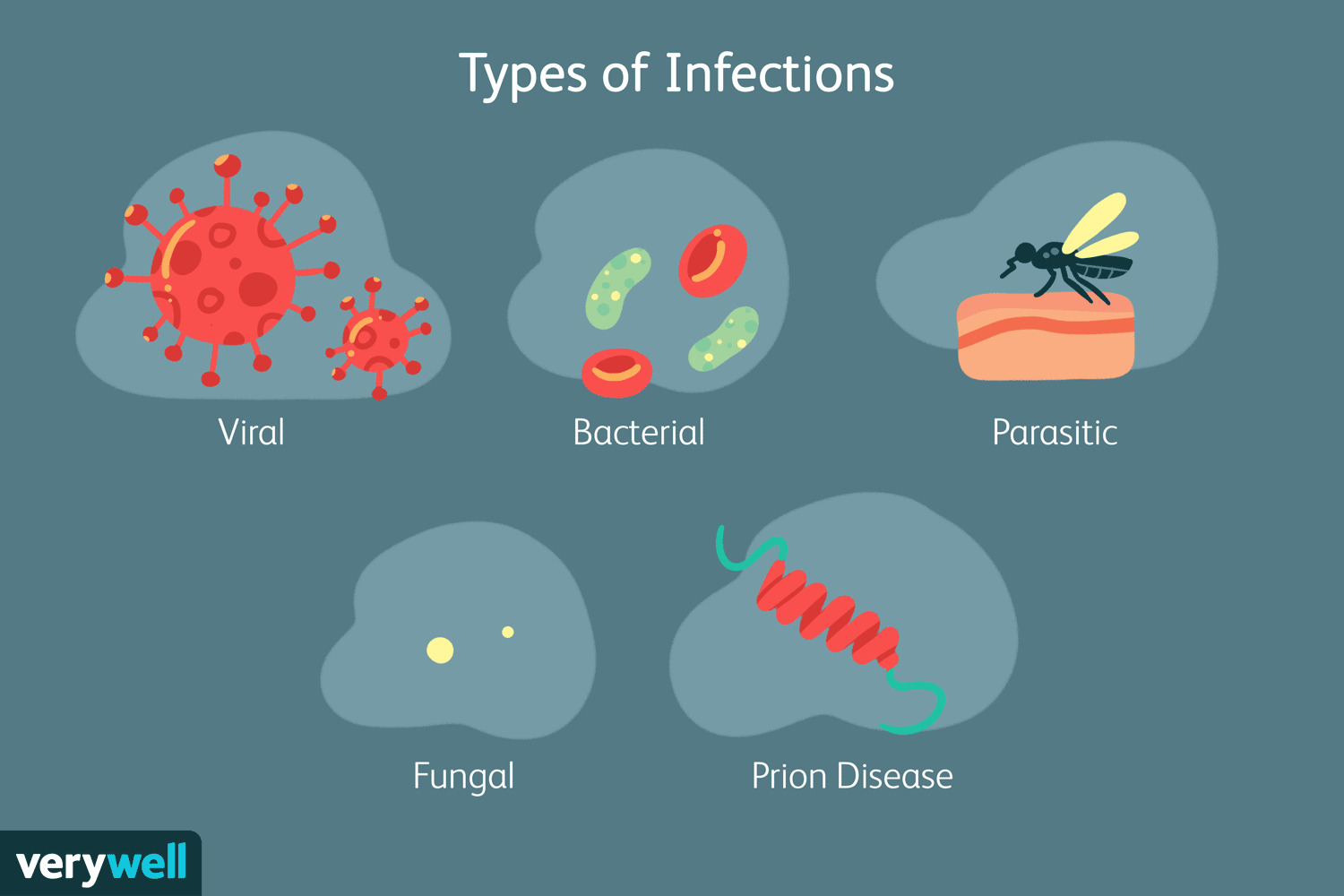Understanding the distinctions between fungal and bacterial infections is crucial for accurate diagnosis and effective treatment. Both types of infections can affect various parts of the body, yet they differ significantly in causes, symptoms, and treatment approaches. Misidentifying an infection may lead to ineffective remedies, prolonging discomfort or worsening the condition.
In this article, we’ll explore the fundamental differences between fungal and bacterial infections, their symptoms, and how they are treated to help you make informed decisions about your health.
Understanding Fungal Infections
Fungal infections are caused by fungi, a type of microorganism that thrives in warm, moist environments. Fungi exist naturally in the body and the environment, but certain conditions can trigger overgrowth, leading to infections.
Common Types of Fungal Infections

- Athlete’s Foot (Tinea Pedis): Affects the skin on the feet, causing itching, redness, and peeling.
- Yeast Infections (Candidiasis): Often occurs in moist areas like the mouth, throat, or genital regions.
- Ringworm (Tinea): Affects the skin, scalp, or nails and presents as circular, scaly rashes.
Symptoms of Fungal Infections
- Redness or discoloration of the affected area.
- Persistent itching or burning sensation.
- Thickened or brittle nails in cases of nail fungus.
- Scaly or peeling skin in localized regions.
Treatment for Fungal Infections
Fungal infections are typically treated with antifungal medications. These include topical creams, powders, or oral medications for severe cases. Preventive measures like maintaining proper hygiene and wearing breathable fabrics can help reduce the risk of fungal growth.
Understanding Bacterial Infections
Bacterial infections occur when harmful bacteria invade the body, multiplying and disrupting normal functions. While many bacteria are harmless or beneficial, pathogenic strains can cause diseases.
:max_bytes(150000):strip_icc()/what-is-a-bacterial-infection-7705652_final-2f1b8b2429b2495c8333b584512d3afa.jpg)
Common Types of Bacterial Infections
- Strep Throat: Caused by Streptococcus pyogenes, leading to a sore throat and fever.
- Urinary Tract Infections (UTIs): Often caused by Escherichia coli, resulting in painful urination and abdominal discomfort.
- Cellulitis: Affects the deeper layers of skin, causing redness, swelling, and warmth.
Symptoms of Bacterial Infections
- High fever or chills.
- Swelling, redness, or pus-filled wounds.
- Pain or discomfort localized to the infected area.
- Fatigue or general malaise.
Treatment for Bacterial Infections
Bacterial infections are treated with antibiotics, which target and kill the bacteria or inhibit their growth. It’s essential to complete prescribed antibiotic courses to prevent antibiotic resistance and ensure full recovery.
Key Differences Between Fungal and Bacterial Infections
Although fungal and bacterial infections can present with similar symptoms, understanding their distinctions is essential for appropriate treatment.
1. Causative Agents
- Fungal Infections: Caused by fungi, including molds and yeasts, which thrive in damp, warm environments.
- Bacterial Infections: Result from bacteria, which can survive in various conditions, including extreme environments.
2. Transmission and Risk Factors
- Fungal Infections: Often spread through direct contact with contaminated surfaces, infected individuals, or animals. Humidity, poor hygiene, and a weakened immune system increase susceptibility.
- Bacterial Infections: Can spread through air, water, food, or direct contact with infected individuals. Poor sanitation and exposure to contaminated resources are common risk factors.
3. Treatment Approaches
- Fungal Infections: Treated with antifungal medications such as creams, sprays, or oral tablets. Natural remedies like tea tree oil and apple cider vinegar can also support treatment.
- Bacterial Infections: Managed with antibiotics, available in various forms such as tablets, creams, or injections, depending on the severity.
4. Symptoms and Presentation
- Fungal Infections: Often involve persistent itching, scaling, and redness of the skin. Nail infections may cause discoloration and brittleness.
- Bacterial Infections: Typically characterized by swelling, pain, and sometimes pus formation. Systemic infections may cause fever and fatigue.
Diagnosing Fungal and Bacterial Infections
Accurate diagnosis is vital for effective treatment. While some symptoms overlap, laboratory tests can determine the underlying cause.
1. Clinical Examination
Doctors assess the appearance of the infected area and review the patient’s symptoms and medical history.
2. Laboratory Tests
- For Fungal Infections: Skin scrapings, nail clippings, or swabs are examined under a microscope or cultured to identify the fungus.
- For Bacterial Infections: Blood tests, urine samples, or wound cultures help identify the bacteria responsible for the infection.
When to Seek Medical Help
While mild fungal and bacterial infections can often be treated with over-the-counter remedies or home care, certain situations require professional intervention:
- Symptoms worsen despite treatment.
- The infection spreads to other parts of the body.
- You experience high fever, chills, or extreme pain.
- Persistent infections that recur frequently.
Preventing Fungal and Bacterial Infections
Prevention is the best strategy to reduce the risk of infections.
Hygiene Practices
- Wash hands frequently and use antibacterial soap.
- Keep skin dry, especially in folds and crevices prone to sweating.
- Avoid sharing personal items like towels or footwear.
Lifestyle Habits
- Wear breathable fabrics to reduce moisture buildup.
- Maintain a healthy diet to support your immune system.
- Stay hydrated and manage stress levels to promote overall well-being.
Vaccinations

Certain bacterial infections, such as tetanus and pneumonia, can be prevented with vaccines. Although no vaccines currently exist for fungal infections, ongoing research shows promising developments.
Conclusion
Fungal and bacterial infections are distinct in their causes, symptoms, and treatment methods. Recognizing these differences can help you seek timely and appropriate care, ensuring a quicker recovery. Maintaining good hygiene, adopting healthy lifestyle habits, and consulting a healthcare provider when necessary are essential to protecting yourself from both types of infections.
If you found this guide helpful or have questions about fungal or bacterial infections, share your thoughts in the comments. For more in-depth articles and expert advice, explore our website and stay informed about maintaining your health.

Leave a Reply